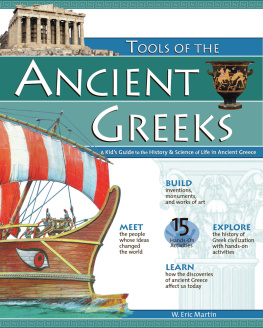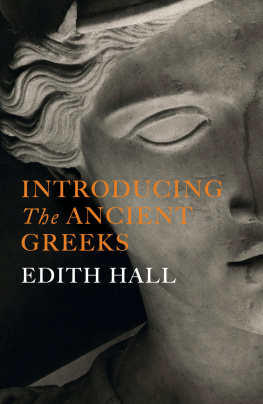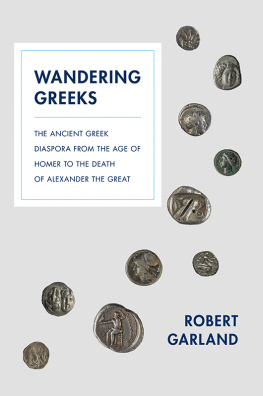
Published in 2020 by The Rosen Publishing Group, Inc.
29 East 21st Street, New York, NY 10010
Copyright 2020 by The Rosen Publishing Group, Inc.
First Edition
All rights reserved. No part of this book may be reproduced in any form without permission in writing from the publisher, except by a reviewer.
Library of Congress Cataloging-in-Publication Data
Names: McKinney, Donna Bowen, author.
Title: How STEM built the Greek empire / Donna B. McKinney. Description: New York: Rosen Publishing, 2020. | Series:
How STEM built empires | Audience: Grades: 712. | Includes bibliographical references and index.
Identifiers: LCCN 2019013255| ISBN 9781725341449 (library bound) | ISBN 9781725341432 (pbk.)
Subjects: LCSH: ScienceGreeceHistoryJuvenile literature. | TechnologyGreeceHistoryJuvenile literature. | EngineeringGreeceHistoryJuvenile literature. | MathematicsGreeceHistoryJuvenile literature. | GreeceCivilizationTo 146 B.C. Juvenile literature. Classification: LCC Q127.G8 M35 2020 | DDC 509.38 dc23 LC record available at https://lccn.loc.gov/2019013255
Manufactured in the United States of America
On the cover: The Parthenon is the most recognizable triumph of Greek STEM achievement; it is both functional and beautiful, and it has weathered the test of time.
CONTENTS
INTRODUCTION
T he word ancient might bring to mind something old-fashioned, dusty, or outdated. However, the ancient Greeks contributions in science, architecture, sports, literature, drama, medicine, and mathematics paint a picture of a society that was the exact oppositeextremely forward thinking. Out of the ancient Greek culture sprang events and ideas like theater, the Olympic Games, geometry, and the idea of government by democracyconcepts that make peoples lives richer and better today.
The inquisitive ancient Greeks loved to ask why questions, trying to understand how things happened or why things existed. This healthy curiosity fueled their advances in the fields of science, technology, engineering, and mathematics (STEM), many of which impact Western culture today.
Coming out of the Greek Dark Ages around 800 BCE, the ancient Greeks entered what is called the archaic period. This period brought sweeping changes to the Greek way of life. During this time, the Greeks moved away from rule by kings toward a more democratic government. The Greeks began producing their beautiful pottery, sculptures, and architecture. They also began to make and use coins for the first time. The population grew, and Greeks increased trade with neighboring countries. The archaic period ended around 500 BCE, after which Greece entered the classical period. Greek culture flourished during this era, with influential philosophers like Socrates, Plato, and Aristotle rising to fame.
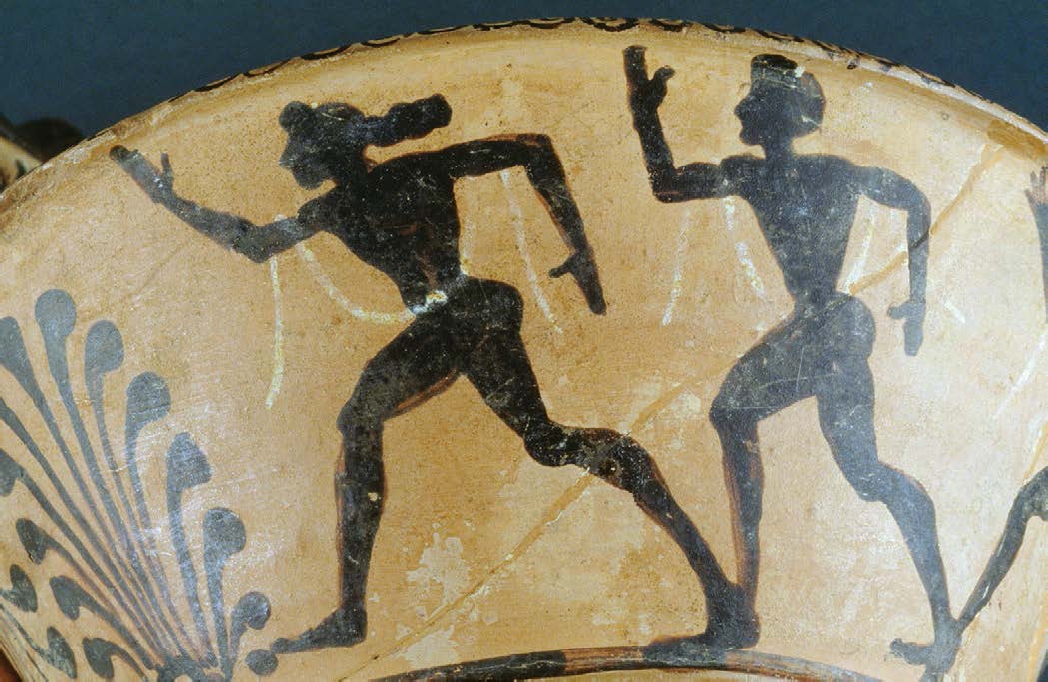
In ancient Greece, Olympic athletes were heroesthe Greeks decorated their pottery with scenes of the athletes competing.
Greece was organized into many city-states at this time. Each city-statea large city and nearby small villageshad its own government, dialect, and currency. The city-state of Athens began to govern itself as a democracy during this period. It was also frequently at war with another powerful city-state: Sparta. The great military leader Alexander the Great lived during the classical period. By conquering large expanses of land, he carved out an empire that reached from Greece to India. Where his military conquests reached new lands and people, the Greek language, ideas, and learning spread into these regions as a matter of course.
When Alexander the Great died in 323 BCE, it ushered in the third era of ancient Greece: the Hellenistic period. The word Hellenistic comes from the Greek word Hellenes, the name the Greeks used to refer to themselves. This period lasted until 146 BCE, when the Romans conquered Greece. However, being defeated by Rome did not bring an end to the influence of the ancient Greeks. The Romans admired Greek ideas and their way of life, so the Romans continued to spread their influence, particularly in STEM fields.
The Greeks first described the earths circumference, helped map the movement of the sun and moon, and showed that illnesses came from natural causes. They gave the world the word mathematics, developed geometry, and showed how pulleys and levers worked. The ancient Greeks developed the catapult, which changed the way wars were waged. They built one of the seven wonders of the ancient worldthe magnificent lighthouse at Alexandria, Egyptand constructed buildings that could withstand the damage of earthquakes. The ancient Greeks gave the world significant developments across the wide-ranging fields of STEM.
CHAPTER ONE

A GLANCE AT ANCIENT GREECE: HISTORY, GEOGRAPHY, AND PEOPLE
D uring the Greek Dark Agesbefore 800 BCE the Greeks were farmers living in small villages. As time passed, the villagers created larger governments and collected taxes. Some villages raised armies and built walls to protect themselves. After many years, these farming villages came to be called poleis, the Greek word that translates to city-states in English.
People in these ancient Greek city-states spoke the same language and shared the same customs, but the individual city-states were different from each other. Some were smallwith just a few hundred people living in the area of influencewhile others were much larger, like Sparta, which spread across 300 square miles (777 square kilometers) of land. Each city-state governed itself.
Although the word city in city-state may suggest urban areas in the way the word is used today, most ancient Greeks lived and worked in the countryside. Some lived near town and traveled out to work in the fields, but farming was the backbone of Greek lifestyle and work.
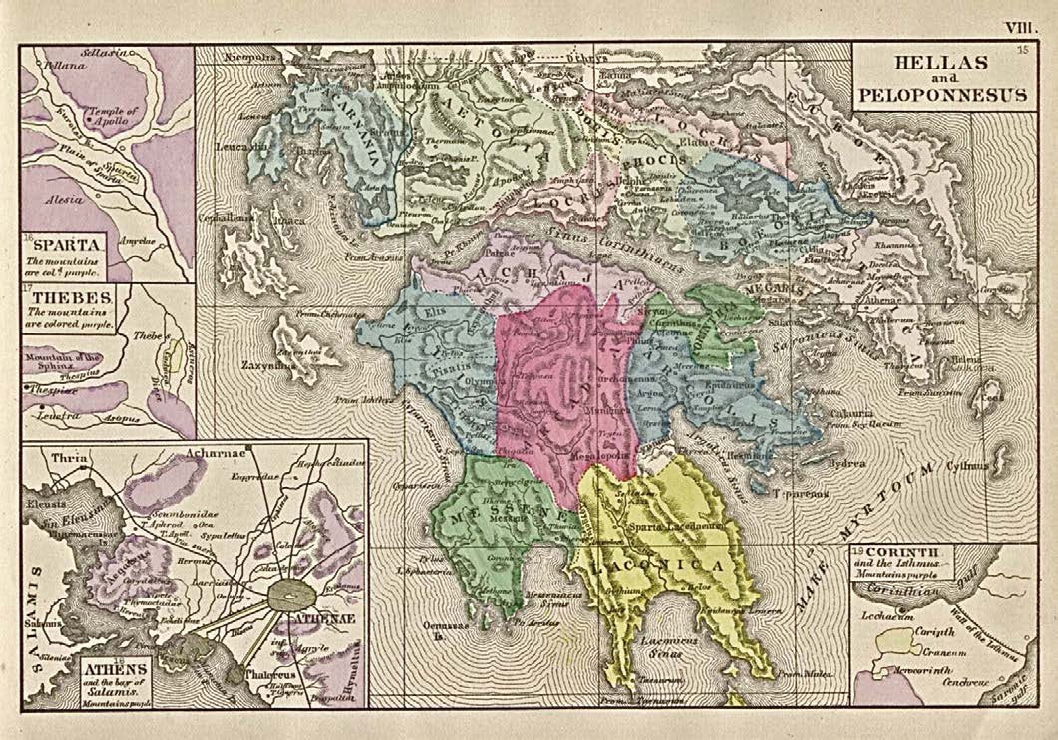
This map of ancient Greece shows the Peloponnese, a large peninsulaa piece of land almost totally surrounded by waterin the southern part of the country.
CLASSES AND CITY-STATES
The ancient Greeks had distinct social classes. The people in the highest class worked in the government and education. They had slaves to do their chores. The people in the middle class worked in the trades; they were free people, like the upper class, but they did not have all the privileges of the elites. People in the lower class were often slaves who had been freed. They had fewer rights and privileges than the upper and middle classes. Slaves were the lowest class in the social order of Greek society. Typically, they were people brought to Greece from other countries. Slaves were occasionally allowed to work to earn their freedom.
Entering the archaic period around 800 BCE, the Greek city-states economies were based on agriculture. They were no longer ruled by kings, but a small number of wealthy aristocrats held the political power in each city-state.
Every city-state wanted to possess more land, so as the population grew, the Greeks spread out in search of new territories. Greek city-states grew in number to more than 1,500 by around 600 BCE. They reached from the Mediterranean Sea across to Asia Minor and from the Black Sea down to North Africa. This included territory on the mainland and on islands.
Next page
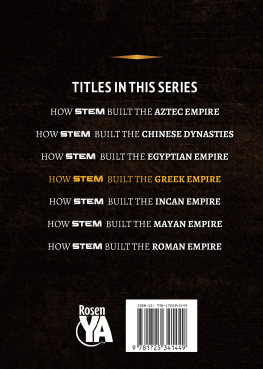

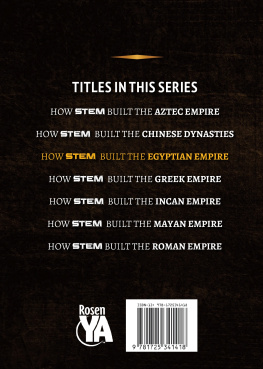
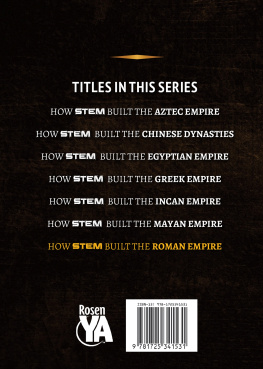

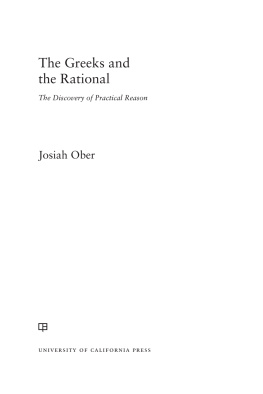
![Michael Lovano - The World of Ancient Greece: A Daily Life Encyclopedia [2 Volumes]](/uploads/posts/book/268736/thumbs/michael-lovano-the-world-of-ancient-greece-a.jpg)
